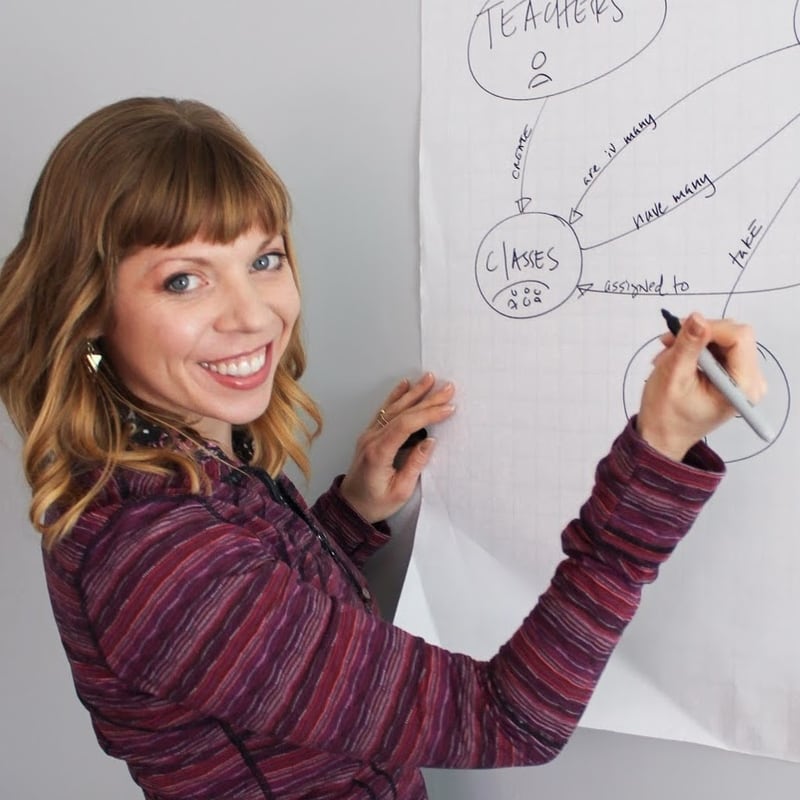When we walk into a new physical environment, let’s say a friend’s home, we immediately begin identifying the things: couch, jug of lemonade, kitchen table, other people. These objects, their implied relationships to each other and to us, give us cues on how to behave and act in the environment. A beer in an ice bucket on the counter is different from a beer in the fridge. A beer in the fridge is different from a beer in your friend’s hand.
This seems so obvious, but the truth is, we UX designers often make it hard for our users to intuitively identify the important objects that make up our digital environments. When users enter our apps, websites, and software, their poor “physical world” brains desperately try to figure out: “What are the things here?” For a system to be truly intuitive, we need our users to quickly — subconsciously, even — answer this question.
Why do so many digital places not clearly communicate the valuable objects they contain?
Unfortunately, today, traditional UX design is completely verb-focused. We define all the things a user will DO in our system before we get really clear on all the things that are getting DONE TO.

Object-Oriented UX is based on the theory that to understand an environment, we first have to understand the objects in that environment. Users can’t get a grip on what they can DO in an environment until they understand the objects that can be DONE TO.
For the record, when I say “objects” I am talking about the real-deal valuable things. I am NOT talking about UI components, which are just means to an end.
- Users come for the EVENTS (the objects), not the calendar picker (the UI component).
- Users come for the PRODUCTS (the objects), not the shopping cart (the UI component).
- Users come for the RECIPES (the you-know-whats), not the cool star-rating slider UI.
The Research
What backs up this theory that people need to understand objects first? I go over a ton of fascinating research in my article The Object-Oriented User, but today, I want to dig into language. Specifically, how all children across all cultures around the world learn to communicate.
For years, I’ve touted the fact that English-speaking children learn nouns first, with verb use coming slower and later. But, I’ve always wondered — what about children who grow up in verb-centric languages? A chapter by Dedre Gentner from the book “Action meets Word: How Children Learn Verbs” (Why Verbs are Hard to Learn, pages 544–564, 2006, Oxford University Press) has helped me get to the bottom of this.
At the very beginning of the chapter, Gentner writes:
“The noun class has had the privilege of naming the highly cohesive bits of the world, where as verbs and prepositions have the job of partitioning the leftovers — a diffuse set of relational components.”
In plain English, verbs are hard because they are relational. Verbs connect the subject and the direct objects. Out of context, EAT is not very useful. Is a family eating spaghetti? Or is a shark eating a diver? Totally different scenarios. But what about APPLE? Apple has concrete meaning and can create an almost universally-shared mental picture across pretty much all people. This is why verbs are hard. They’re abstract.
But are verbs hard for everyone? According to Gentner, the answer is unequivocally “yes.” Study after study shows a clear “noun advantage” for early-life word learning in every language tested. English, Mandarin, German, Korean, Tzotzil, Polish, Navajo — you name the language, human babies learn nouns easier and faster than verbs, even in languages like Mandarin and Korean that are purportedly more “verb friendly.”
Mandarin: A Level Playing Field
According to Gentner, Mandarin comes closer than any other language to having what she calls “equal morphological complexity” for nouns and verbs. Think about all the conjugations an English-speaking child has to learn for a verb: run, running, ran, runs. Now think about concrete nouns: lobster, lobsters. Mandarin apparently applies no morphology to either, making it a — linguistically speaking — level playing field.
But even in Mandarin, “Mandarin-speaking children learn new nouns much more readily than new verbs — and even more strikingly, that Mandarin-speaking children learn new verbs less readily than Japanese and English-speaking children.”
It should be noted that by two to three years, most Mandarin-speaking children will retain an approximate 50–50 balance of verbs to nouns as noted in the article by Scientific American, “Beyond “Mama” and “Dada”: Why Babies Learn Certain Words.” By the same age, English-speaking children will retain approximately three times as many nouns as they do verbs.
Tzeltal: Four Words for Eat
The Native American language Tzeltal is a verb-object-subject language (eat I pizza), whereas English, for instance, is a subject-verb-object language (I eat pizza). Tzeltal also allows for noun-dropping, which means, in many cases, a child will hear a verb, not only as the first element of a sentence, but as the only element.
In addition, Tzeltal contains many verbs that are contextually specific. Just to illustrate, they have as many as four different words for “eat,” depending on what is being eaten.
- we’ = “to eat tortilla or bread”
- k’ux = “to eat crunchy things”
- lo’ = “to eat soft things, like applesauce”
- ti = “to eat meat or to bite”
The contextual specificity of the Tzeltal words for “eat” led researchers to speculate that perhaps some of the abstraction that makes learning verbs more difficult for English-speaking babies would be minimized for Tzeltal babies. This should, the thinking went, result in a higher or more equal noun/verb ratio in Tzeltal baby vocabularies. But once again, noun dominance prevailed. The study concluded that Tzeltal children do actually acquire verbs more readily than English-speaking children–no doubt because of the contextual nature of many Tzeltal verbs, but even in this verb-fertile language, the children showed a clear noun advantage.
Verbs are still hard
It doesn’t stop there. Verbs and other relational terms take time to fully grok. In yet another study (I know), a linguistics researcher named Melissa Bowerman (1982) found that “children make semantic errors on verbs and other relational terms even quite late in language learning.” She tells the story of a child of almost five, exclaiming “Don’t dead him!” — greatly concerned that his mother was going to kill a spider.
Do you have any funny stories of your children messing up verbs? I’d love to hear about them in the comments.
What does this mean for UX?
Children, just like new users, use objects as “fixed hooks” to anchor themselves. With a foundation in object-understanding, they are able to learn how to handle all abstract, relational actions they might be able to take on those objects.
As designers, we need to acknowledge certain truths about ourselves. We are object-oriented animals. Verbs are hard for us. Nouns are easier. If the most pure human minds (babies) are any indication, we are built to soak up nouns from day one. To learn the verbs, one has to first understand the nouns that give them context.
So how do you make sure your users understand the objects within your digital system? Simple. You (and everyone on your team),needs to understand the objects. There is absolutely NO WAY around this. If the team building the system does not have a clear, shared, rock-solid understanding of the objects, it will be impossible for the users to have a clear, shared, rock-solid understanding of the objects. And without that object-understanding, users will bumble in the dark trying to figure out how to get stuff done. Without a grasp on the nouns, their experience of the verbs will be doomed.
In short, make sure you define the nouns before you start designing the verbs. And make sure your users understand those nouns before they are introduced to all the verby things they can do with them.
Want to learn more about OOUX? Go to Rewiredux.com/resources or take the full plunge by signing up for OOUX Summer School (August 22–23, 2020).
---
Originally published on Medium
































































































































































































